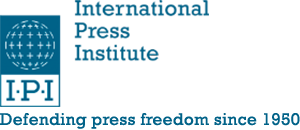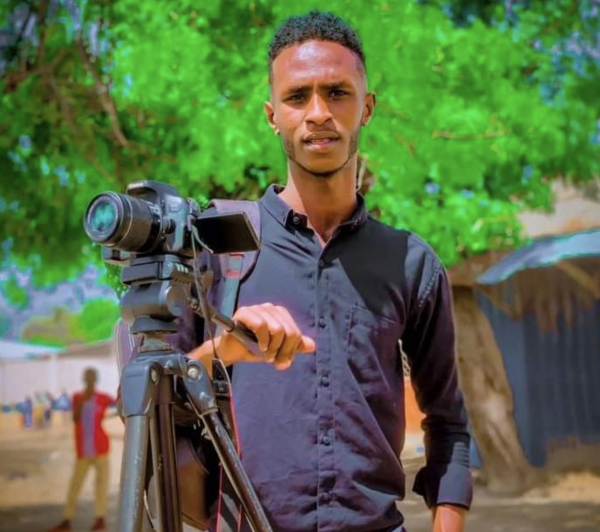In 1991, CNN took a bold step when it took cameras to Teferi Ber refugee camp in Ethiopia, near the Somalia border, to film a series on the famine that everyone expected to happen that summer.
At the time, Will King, CNN senior international editor, told the Los Angeles Times that he hoped the information would help prevent future famines “by alerting not only the public but also world leaders.
“We are providing a chance for everyone to see the situation as it is and hear experts about what it will be,” King told Times staff writer Steven Herbert in 1991. “We don’t feel like we’re saints, we feel we’re journalists doing our jobs.”
That must have been the same thought the BBC had when it reported from a refugee camp some seven years earlier, in 1984.
Today, all eyes are turned once again to the Horn of Africa region where some 12 million people are faced with famine triggered by the worst drought in the region in 60 years.
In its reporting of the famine, the Western media all too often focuses on the humanitarian angle and not enough on the root causes of famine or what needs to be changed to prevent it in the future. An Article 19 report on the Ethiopian famine of 1999-2000 points out that “the obstacles to sustained high-quality coverage by the mainstream foreign media of complex issues in countries such as Ethiopia have, if anything, intensified since the 1982-5 famine. It points to increased pressure for immediate soundbites and headlines, further privileging of images over words, lower priority given to resident expertise and increased financial constraints on visits to inaccessible parts of the world.”
What comes to mind, then, is how well the Western-donated aid is being tracked by the media? Are guerilla warlords using the aid to boost their armies? Do rogue leaders use food as a weapon?
In many cases, journalists from countries impacted by the famine who venture to address these questions are often harassed or threatened. Access to the information that would bring the answers to these questions is almost always not available to the media.
In Nobel Prize winner Amartya Sen’s “Democracy as a Universal Value,” he rightly proclaims:
“Famines are easy to prevent if there is a serious effort to do so, and a democratic government, facing elections and criticisms from opposition parties and independent newspapers, cannot help but make such an effort. Not surprisingly, while India continued to have famines under British rule right up to independence …they disappeared suddenly with the establishment of a multiparty democracy and a free press.”
Writing on the much quoted Sen’s study of press freedom and famine, Thomas L. Myhrvold reported in his 2003 analysis entitled “Democracy, News Media, and Famine Prevention: Amartya Sen and the Bihar Famine of 1966-67” that “a free press may be able to keep a threatening famine at bay for a number of reasons” – namely, he writes, a free press can have an informational function and also a direct function of political pressure.
A free press, coupled with investigative reporting, can serve to inform and the public, empowering people – people armed with information – to make societal changes and to participate in the democratic process. An informed public is a free public.
During the northern Nigeria famine of 1973-74, the Daily Times in Nairobi played a crucial role in helping fight famine. And they suffered for it. As the paper reported on 20 December 1973: “The way our journalists are maltreated nowadays makes me to doubt the claim that our press is free. Freedom of the Press should be respected in the interest of all. The Press, among other things, informs the governed of the activities of the Government. It exposes corruption in our society and thus helps to curb it. Through the help of the press, the drought affected areas of the Northern states of the country have received help from many Nigerians. The freedom of the press should, therefore, not be interfered with by those in power.”
While Nigeria enjoys a robust and free press, that is not the case in most of the areas worst-hit by the drought. Journalists in countries like Somalia have long worked in a dangerous environment, hostile to press freedom, where reporting on famine could get you killed. In fact, Somalia has been described by some press freedom groups as the most dangerous place in Africa for journalists. Complicating matters is the fact that many journalists and their families in these regions are also impacted by the famine, so there may be reluctance to report on certain aspects about the famine for fear that some officials may withhold aid.
Last August, Imraan Buccus, then a research fellow at the School of Politics at the University of KwaZulu-Natal, wrote an op-ed for The Mercury newspaper in South Africa. He hit the nail on the head when he wrote: “The attack on press freedom is not just an attack on human rights. It is also an attack on the material interests of the poor.”
And that is the very reason why press freedom remains a pillar of democracy and why organizations like the International Press Institute fight for it so vigorously in every corner of the world.
Access to information and a free press are life-saving tools for society before, during and after natural disasters. It is imperative that governments, warlords and others who would try to hold information at bay are prevented from doing so – for the sake of all society.


